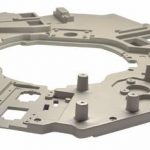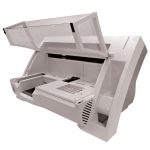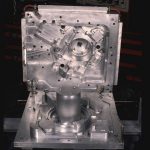Reaction Injection Molding, or RIM, produces parts that are dimensionally stable, chemically resistant, physically tough, wear resistant and yet can have intricate detail. This process is an excellent choice for large plastic parts produced for lower volume production quantities. Examples include enclosures for medical devices, panels for electrical equipment and housings for computer and telecommunications equipment.
Typical RIM projects may include:
- Both thin and thick wall sections within localized areas of the same part
- Ideal for large, decorative covers
- One or more type of inserts may be encapsulated into the molded part (fasteners, castings, stampings and circuit cards)
- Provide a thermal, electrical or acoustical insulation
- Complex geometry including: louvers, ribs, bosses and openings
- Superior cosmetic appearance for visibly critical applications
- Low cost per cubic inch
- Low tooling investment as compared to high pressure molding process









